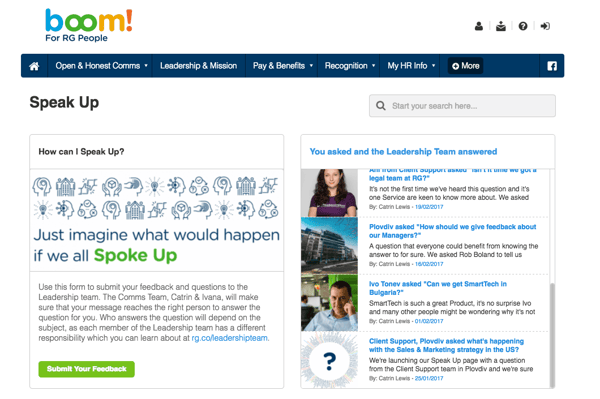.jpg?width=500&name=shutterstock_608301818%20(2).jpg)
5 min read
Every office has one. The Negative Nancy. Gloomy Stu. Bummer Bob.
We can’t all be rainbows and sunshine. Some people are simply less cheery than others, and even the most positive of us, myself included, experience an off day when we’re not feeling well or something has impacted our outlook. And that’s OK, and perfectly normal.
However, a constant stream of negativity can threaten production, hurt morale, increase turnover and generally make the office an awful place for everyone.
It’s important to keep a close eye on workplace negativity and not let it grow unchecked. Pessimistic voices can infect the rest of the office until you’re faced with an epidemic of apathy and antagonism. When this happens, you may want to consider that the problem isn’t just a Negative Nancy. More than likely, the problem runs deeper.
As an HR director or head of people, a key part of your responsibility is to figure it out. Here are a few ways to break down where that negativity might be stemming from, and a couple ideas on how to combat it if and when it happens at your workplace:
Let them have their say
You should generally avoid creating rules such as a “No whining” rule aimed at eradicating workplace negativity. They won’t work. To effectively combat negativity, you need to examine the root cause and proactively take measures to nourish an open and positive working environment. Instead of clamping down on “whiners,” find out what’s wrong. Set an example by instead encouraging an open, honest and transparent culture and acting on the feedback when appropriate.
Be more inclusive
One of the most common causes of workplace negativity is that employees feel that their managers or the leadership team make decisions without getting their input. If you give employees the opportunity to express opinions, offer suggestions and contribute to company decisions, it makes them feel more invested in the organisation and less prone to complaining.
Solicit opinions about how to meet challenges, and hold meetings regularly that give employees opportunities to voice feelings and concerns, and give you and your leadership a chance to receive that feedback graciously. It’s important to hear those quieter voices as well, so consider other options on gathering opinions.

We regularly use our internal communications platform boom! to give every single employee a place to Speak Up, one of our core eight company values. If you use something like Google forms, these can be anonymous, too.
One key example of this is Under Armour, which is known for its team-focused culture. When Under Armour was a startup, founder Kevin Plank would assemble the entire staff at least once a week to talk about major decisions. Today, Under Armour has nearly 14,000 employees, and a few times each month Plank invites a handful of them to lunch gatherings to discuss what’s working or not in their departments.
Sprinkle some sunlight on your employees with growth opportunities
It’s easy to become negative when it feels like you’re in a dead-end job and there are no opportunities for advancement. Employees will feel more optimistic, produce better work and radiate positive energy if they feel they’re in line for a promotion or have a forward-looking career path. To foster a sense of career growth, provide training opportunities such as workshops and skills courses, and create a framework a clear path for career advancement. Outside of the core job, you can look at things like mentoring programmes and your onboarding L&D for more opportunities to involve other members of your staff, too.

Reward contributions, and make recognition core to your culture
The ultimate proactive way to combat negativity is to reward honest positivity. Rewards and recognition make people feel like their attitudes and contributions are valued, and they demonstrate to others that your organization appreciates their people. With Reward Gateways’s employee recognition system SmartAwards™, you can quickly integrate reward and recognition tools, such as customised eCards, monetary awards and peer-to-peer nominations and even add a public social wall so people can see the public praise.
Make fun a (big!) part of what you do
Sure the office is for working, but it doesn’t have to be serious all the time. Make opportunities to bring fun into the workplace by promoting events that build camaraderie and relax. Consider hosting monthly happy hours near the end of the work day, establish sports teams that participate in community leagues or just throw on a rugby match in an empty conference room with popcorn. Some companies such as Pinterest take fun extremely seriously, hosting Ultimate Frisbee leagues against other tech companies or “Studio Nights” where employees learn outside-of-the-box crafts and skills.
It’s important for me to note not to mistake these tips for encouraging you to ignore or put a Bandaid on rampant negative attitudes.
By building an engaged workforce and fostering a culture of open and honest communication — the good, bad and the ugly — you can bring employees closer to your organisation’s purpose and mission, helping drive those negative feelings away. You should try a few of these ideas and do what’s right for your business, and what you think will work best, and then refine as you go.

 Robert Hicks
Robert Hicks




